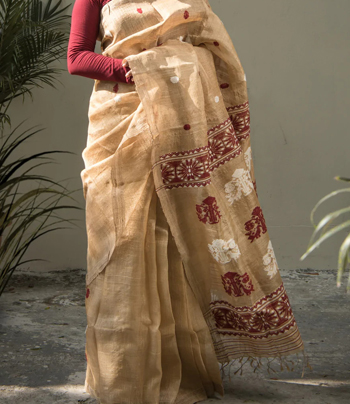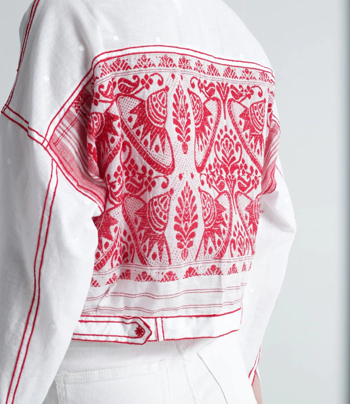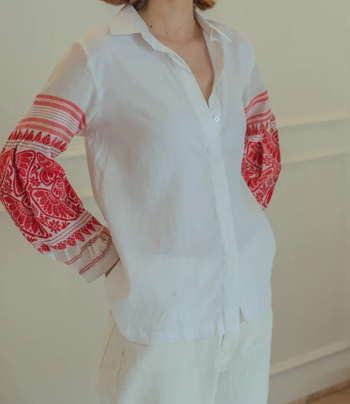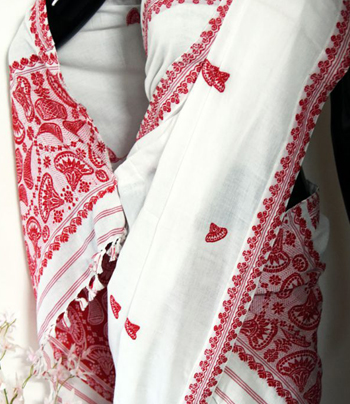Muga Silk
Muga the golden-yellow silk produced by Antheraea assama is found only in the Brahmaputra Valley of India. This species of silkworm is semi-domesticated in that the rearers collect the worms that crawl down at the end of their larval period. They are GI Journal No. 52 28 October 30, 2013 allowed to spin cocoons in the rearer’s houses. The shimmering golden yellow silk is referred to in literature from as long as 1662 BC. The Antheraea assamensis is cultivated especially in Brahmaputra valley because its characteristic ecological requirements are found only in its natural abode
Silk is a protein fiber produced by silkworm for spinning cocoons. The purpose of the cocoon is to provide a protective casing to the silkworm during the most critical period of its life i.e. the pupal stage. Basically there are two proteins, which form the silk fiber i.e. "fibroin" which constitutes the core of the fiber and "Sericin" a waxy substance that encases the fibroin. These proteins are synthesized by the silkworm from the leaf it feeds on during its larval period. There are three types of silkworm found in Assam, particularly mulberry, eri and muga silk. The muga silk is golden-yellow in color. Muga possesses the highest tensile strength among all the natural textile fibers
Gamosa
Gamosa is a traditional textile of Assam. It bears great significance for the people of Assam. Gamosa is one of the unique identities of Assamese Society. It is a symbol of Assamese culture. This is a handloom product which has high esteem and wide usage in Assamese culture. In earlier times “Gamosa” was also known as “Phali”. Furthermore, as it was used to wipe face that is why it was also known as “Mukhosa”. Gamosa with red border (Pari) and floral motifs on both sides is used by gents and ladies as headgear and is wrapped around the waist during Bihu festival. Normally it is used as wrapper in neck or hang on the shoulders while going to Namghar (temple). Moreover, in all rituals, related to “Puja” and “Nam Prasang”, “Gamosa” is wrapped around the neck by both gents and ladies. Gents normally use “Gamosa” as head gear while working in paddy field or in kitchen garden. During Bihu festival, the younger offer “Gamosa” to elder people to show respect to seniors and love to dear ones. Gamosa is very close to the culture of Assamese people.
The origin of the word “Gamosa'' had come from Sanskrit word “Gatro Marjoni” meaning the piece of fabric used to absorb water / to wipe body after taking bath, the piece of fabric to keep betel nut, the piece of fabric used as headgear (Hemchandra Baruah). According to Dr. Birinchi Kr. Baruah, Gamosa is known as Angvastra, came from the word “Angochha '' which means Gamosa. Size and functions of Gamosa are different.
Source: Intellectual Property India






